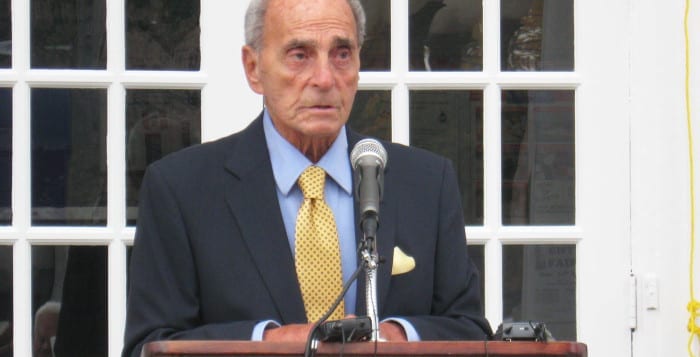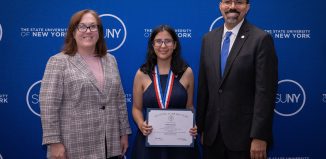Smithtown is LI’s first clean energy community

Smithtown is officially green, not with envy, but with energy efficiency.
According to Supervisor Pat Vecchio (R), The New York State Energy Research and Development Authority has designated Smithtown the first municipality on Long Island, and first town in all of New York State, to be a clean energy community.
Smithtown received the recognition after completing four of ten high-impact clean energy actions as part of New York State Gov. Andrew Cuomo’s (D) $16 million Clean Energy Communities program and competition. By being among the first two municipalities in the state to complete the challenge, the town, along with Ulster County, now qualifies for grants up to $250,000 toward clean energy improvement in their community.
“Being first means that, out of all New York towns, Smithtown is in the forefront of energy efficiency and environmental initiatives,” Vecchio said in a statement.
Cuomo launched the initiative in August of this year as a way to support local government leaders to enforce energy efficiency, reduce pollution, save energy costs, and create jobs in their communities.
“This initiative encourages alternatives that will save money and create new opportunities for municipalities, and is one more step toward building a cleaner and more sustainable New York,” Cuomo said in a statement.
The town has been contributing to the green cause for more than a decade and has done a lot to earn its newfound designation.
Smithtown has been nationally recognized for becoming the first municipality in New York State to institute a requirement to use refuse collection trucks who use compressed natural gas.
According to the U.S. Department of Energy, the 30 contractor-owned diesel refuse trucks collecting solid waste and recyclables from the town’s 116,000 residents were replaced by 22 compressed natural gas models in January 2007.
Their choosing of clean alternative fuel and hybrid vehicles — which include snow plows, shuttle buses, pickup trucks and cars — has greatly contributed to reduced vehicle exhaust emissions and reduced fuel costs.
In 2014, Smithtown continued its trendsetting by becoming one of the first in New York to adopt the Unified Solar Permit Process, a streamline solar permit form developed to make it much easier and cheaper for residents to install solar energy systems on their homes.
It was mandatory within the Clean Energy Communities program that at least two of the high-impact action items be done after Aug. 1. The town got to work fast by both replacing most of its streetlights with energy efficient LEDs — which helps reduce street light energy use by 65 percent, saves generating costs, and overall creates a better lit and more attractive community — and implementing additional training and inspections to make sure the building department had a good understanding of the NYS Energy Code.
With about 60 percent of New York’s total energy consumption coming from buildings, according to the NYSERDA website, “There is a significant opportunity for energy savings through improved Energy Code compliance.”
William White, director of the Smithtown Building Department, said two field inspections occurred Nov. 8 through a couple homes.
“They were very happy with how the houses were insulated,” White said in a phone interview. “They just made a couple points of improvement, but overall, the building department was in good shape with our knowledge of the state’s energy codes.”
Outside of the clean energy competition, Smithtown has also installed a 50kW solar energy system and 10kW wind turbine at the Municipal Services Facility in Kings Park and partnered with the state to advocate for the Long Island Green Homes Initiative, a not-for-profit launched in 2015 that helps set up homeowners with a professional energy audit at no cost.
Organizers of the program said they connect residents with NYSERDA “to generate savings, stimulate jobs, boost economic development and promote sustainability.”
According to Vecchio’s office, Smithtown already plans to use their $250,000 grant to install new alternative energy systems, two of which are currently in development: a solar electric system at the Planning Department on Redwood Lane and another solar electric system at the Devine Building on West Main Street.






